A photo-feature aimed to throw some light on the truth of destruction, truth of violence as well as the truth of Ahimsa – non-violence, harmlessness. All passages are from the works of Sri Aurobindo (selected with help from Beloo Mehra). All photos are by Suhas Mehra, taken at Chennakesava temple, Belur.
“The web of life has been made a mingled strain of good and evil and God works His ends through the evil as well as through the good.” (Bande Mataram, CWSA, Vol. 7, pp. 1119-1120)

“War and destruction are not only a universal principle of our life here in its purely material aspects, but also of our mental and moral existence. It is self-evident that in the actual life of man intellectual, social, political, moral we can make no real step forward without a struggle, a battle between what exists and lives and what seeks to exist and live and between all that stands behind either. It is impossible, at least as men and things are, to advance, to grow, to fulfil and still to observe really and utterly that principle of harmlessness which is yet placed before us as the highest and best law of conduct…Evil cannot perish without the destruction of much that lives by the evil, and it is no less destruction even if we personally are saved the pain of a sensational act of violence.” (Essays on the Gita, CWSA, Vol. 19, p. 42)
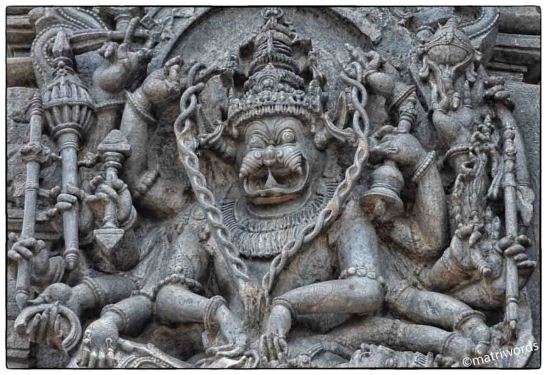
“The gospel of universal peace and goodwill among men—for without a universal and entire mutual goodwill there can be no real and abiding peace—has never succeeded for a moment in possessing itself of human life during the historic cycle of our progress, because morally, socially, spiritually the race was not prepared and the poise of Nature in its evolution would not admit of its being immediately prepared for any such transcendence. Even now we have not actually progressed beyond the feasibility of a system of accommodation between conflicting interests which may minimise the recurrence of the worst forms of strife. And towards this consummation the method, the approach which humanity has been forced by its own nature to adopt, is a monstrous mutual massacre unparalleled in history; a universal war (reference to WWI), full of bitterness and irreconcilable hatred, is the straight way and the triumphant means modern man has found for the establishment of universal peace! That consummation, too, founded not upon any fundamental change in human nature, but upon intellectual notions, economic convenience, vital and sentimental shrinkings from the loss of life, discomfort and horror of war, effected by nothing better than political adjustments, gives no very certain promise of firm foundation and long duration. A day may come, must surely come, we will say, when humanity will be ready spiritually, morally, socially for the reign of universal peace; meanwhile the aspect of battle and the nature and function of man as a fighter have to be accepted and accounted for by any practical philosophy and religion.” (Essays on the Gita, CWSA vol. 19, pp. 48-49)
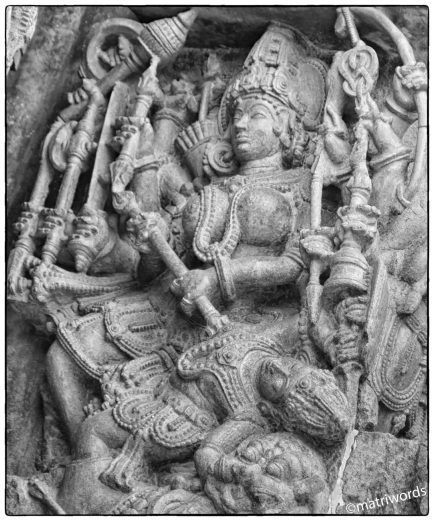
“The doctrines of Ahimsa and non-violence and altruism are early steps on the road to spiritual knowledge—but once advanced on the road what is true behind them takes its place, as a thread in the complex weft of spiritual truth and feeling, not as a rigid ethical rule or all-swallowing dogma. The Manifestation here is too complex in its concealed Unity for such mental or emotional formulas to be unerring guides.”
* * *
“The impersonal Truth, precisely because it is impersonal, can contain quite opposite things. There is a truth in Ahimsa, there is a truth in Destruction also. I do not teach that you should go on killing everybody every day as a spiritual dharma. I say that destruction can be done when it is part of the Divine work commanded by the Divine. Non-violence is better than violence as a rule, and still sometimes violence may be the right thing. I consider dharma as relative; unity with the Divine and action from the Divine Will the highest way. Buddha did not aim at action in the world, but at cessation from the world-existence. For that he found the eightfold Path a necessary preparatory discipline and so proclaimed it.
“It [Ahimsa] had nothing to do with the Yuga [at the time of Buddha], but with the path towards liberation found by Buddha. There are many paths and all need not be one and the same in their teaching.”
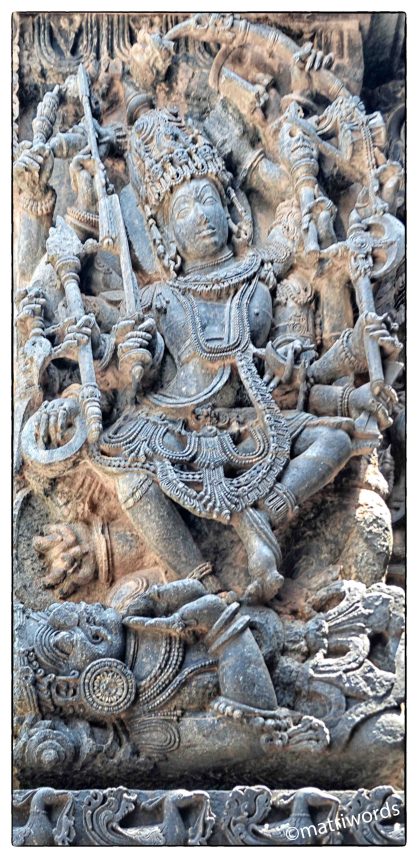
“Destruction in itself is neither good nor evil. It is a fact of Nature, a necessity in the play of forces as things are in this world. The Light destroys the Darkness and the Powers of Darkness, and that is not a movement of Ignorance!
“It all depends on the character of the destruction and the forces that enter into it. All dread of fire or other violent forces should be overcome. For dread shows a weakness—the free spirit can stand fearless before even the biggest forces of Nature.”
* * *
“This world is so arranged that it is not possible to live without some destruction of life—so for this there need be no remorse. Only one should not destroy life wantonly or inflict needless suffering on animals or any living things.” (Letters on Yoga, CWSA, Vol. 28, p. 434-435)
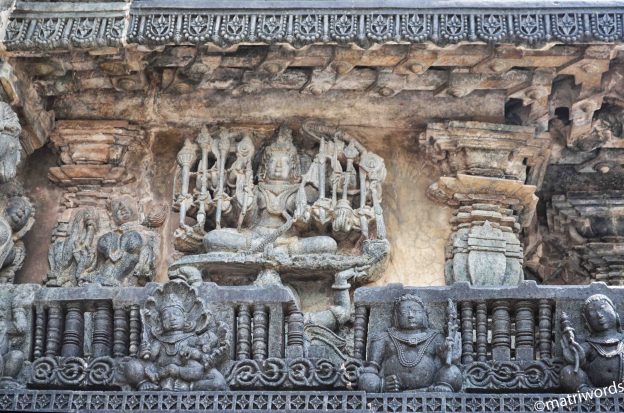
“The physical fact of war, however, is only a special and outward manifestation of a general principle in life and the Kshatriya is only the outward manifestation and type of a general characteristic necessary to the completeness of human perfection. War typifies and embodies physically the aspect of battle and struggle which belongs to all life, both to our inner and our outer living, in a world whose method is a meeting and wrestling of forces which progress by mutual destruction towards a continually changing adjustment expressive of a progressive harmonising and hopeful of a perfect harmony based upon some yet ungrasped potentiality of oneness. The Kshatriya is the type and embodiment of the fighter in man who accepts this principle in life and faces it as a warrior striving towards mastery, not shrinking from the destruction of bodies and forms, but through it all aiming at the realisation of some principle of right, justice, law which shall be the basis of the harmony towards which the struggle tends. The Gita accepts this aspect of the world-energy and the physical fact of war which embodies it, and it addresses itself to the man of action, the striver and fighter, the Kshatriya,—war which is the extreme contradiction of the soul’s high aspiration to peace within and harmlessness without, the striver and fighter whose necessary turmoil of struggle and action seems to be the very contradiction of the soul’s high ideal of calm mastery and self-possession,—and it seeks for an issue from the contradiction, a point at which its terms meet and a poise which shall be the first essential basis of harmony and transcendence.” (Essays on the Gita, CWSA, Vol. 19, p. 52)

“Under certain circumstances a civil struggle becomes in reality a battle and the morality of war is different from the morality of peace. To shrink from bloodshed and violence under such circumstances is a weakness deserving as severe a rebuke as Srikrishna addressed to Arjuna when he shrank from the colossal civil slaughter on the field of Kurukshetra.” (Bande Mataram, CWSA, Vol. 6, p. 278)
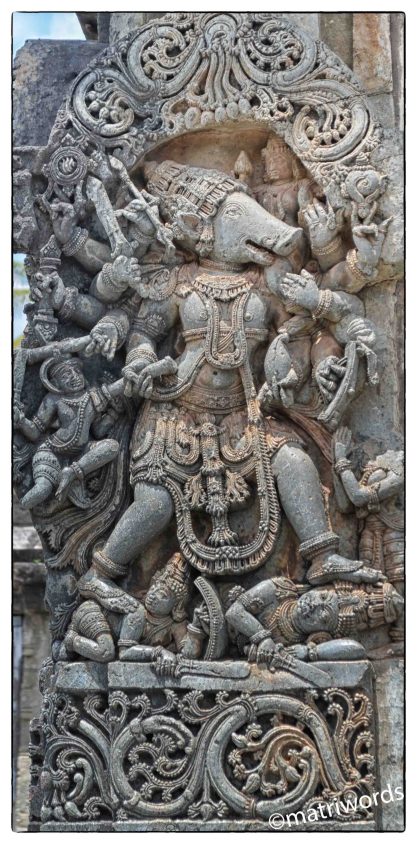
“A certain class of minds shrink from aggressiveness as if it were a sin. Their temperament forbids them to feel the delight of battle and they look on what they cannot understand as something monstrous and sinful. “Heal hate by love, drive out injustice by justice, slay sin by righteousness” is their cry. Love is a sacred name, but it is easier to speak of love than to love. The love which drives out hate, is a divine quality of which only one man in a thousand is capable. A saint full of love for all mankind possesses it, a philanthropist consumed with the desire to heal the miseries of the race possesses it, but the mass of mankind do not and cannot rise to that height…. To ask masses of mankind to act as saints, to rise to the height of divine love and practise it in relation to their adversaries or oppressors, is to ignore human nature. It is to set a premium on injustice and violence by paralysing the hand of the deliverer when raised to strike. The Gita is the best answer to those who shrink from battle as a sin and aggression as a lowering of morality.” (Bande Mataram, CWSA, Vol. 7, p. 1117)
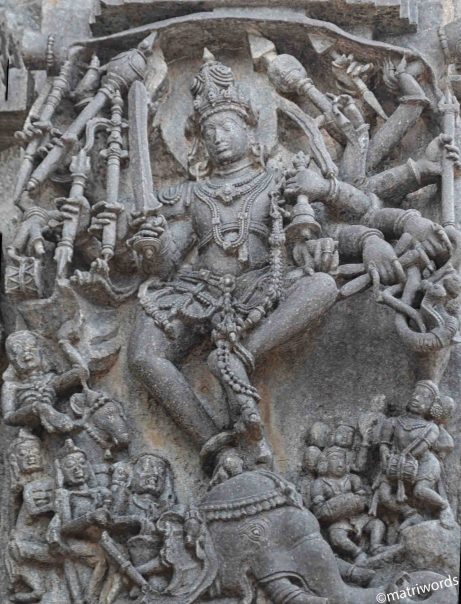
“Aggression is unjust only when unprovoked, violence unrighteous when used wantonly or for unrighteous ends. It is a barren philosophy which applies a mechanical rule to all actions, or takes a word and tries to fit all human life into it. The sword of the warrior is as necessary to the fulfilment of justice and righteousness as the holiness of the saint. Ramdas is not complete without Shivaji. To maintain justice and prevent the strong from despoiling and the weak from being oppressed is the function for which the Kshatriya was created. Therefore, says Sri Krishna in the Mahabharat, God created battle and armour, the sword, the bow and the dagger.” (Bande Mataram, CWSA, Vol. 7, p. 1121)

Enjoyed reading the post with quotes that hold true!
LikeLiked by 1 person
Thanks, Vishal. Truth is always beyond our fixed mental ideologies of nonviolence or anything. That’s what we were hoping to highlight through this post.
LikeLiked by 1 person
If there’s matter, there will be anti matter… So if goodness exists, I wonder if evil can be completely perished. True destruction is not always bad… It’s not evil… It’s a work of nature, unless resulting from violence and perhaps greed too. Your posts always put me in a different frame of mind. Beautiful photography too.
LikeLiked by 1 person
Thank you, Raj. I am happy to hear that my posts have some impact 😀 (Positive or negative – let’s not go there…hahaha!!) But seriously, I think you have really caught on the essence of the idea here – there is a room and need for destruction because without destruction there can be no new creation. But what matters is the force or motive behind the destruction. Taliban destroying Bamiyan Buddhas is one example that comes to mind of a destruction that came from all the wrong motives and with wrong force driving it. But then I also wonder if we as mere mental human beings can ever fully understand the invisible or hidden force or motive behind Nature’s cruel means of destruction (what seem as cruel to us as human beings). Nature may use all sorts of ways and means that we human beings with our moral ideas which are relative to our times and places can never really grasp with our minds.
LikeLike
I loved the pictures Beloo. I am one of those who would say No to all violence. And yet now I see that is taking a rather simplistic view of things. After all we do have Shiva the destroyer and Krishna did ask Arjun to use his bow. However, the kind of violence the world has seen over the last few days makes is worrisome. And the saddest part is that the perpetrators think they are motivated by righteous reasons. How misguided are they.
LikeLiked by 1 person
Hi Tulika! Thanks so much for your thoughtful comment. Yes, indeed our ancestors, our rishis and thinkers had given us a much more nuanced view of life’s realities and truths – both for leading individual life and a collective life as society/nation. And it is also true that somewhere along the curve of life, humanity has forgotten all those fundamental truths of existence and life and brought in all sorts of misguided (though that seems rather a small word here, it is much more than misguided) ideas about everything, including violence/non-violence etc. I agree so much of the mindless violence we see in the world today is being led by the lowest possible nature of humanity. And this kind of violence must be done away with. But the way the world is set up today, even to do that we will see more violence (e.g. armies etc)- and so it will be up to us to reasonably discern and lend our mental/spiritual energies to the side of what is ‘right’, what is ‘dharmic’, what is ‘good’.
LikeLike
I found the pictures absolutely mesmerising and so detailed! Would love to see them for real one day.
As an army wife, I am all for peace and ahimsa but sadly it does not work so I just pray for peace and empathy.
LikeLiked by 1 person
Thank you, Inderpreet. I am so glad you shared your perspective on this post as an army wife!
LikeLike
Profound and true with lovely pics to go with
LikeLiked by 1 person
Thank you!
LikeLike
I got stuck on these lines –
“Buddha did not aim at action in the world, but at cessation from the world-existence. For that he found the eightfold Path a necessary preparatory discipline and so proclaimed it.
“It [Ahimsa] had nothing to do with the Yuga [at the time of Buddha], but with the path towards liberation found by Buddha. ”
1. A small story appears in Kosal Samutta in Trpitak. King Ajatshatru attacked King Pasenadi his uncle. Pasenadi won the war & captured Ajatshatru. But Pasenadi released him later. Buddha said that Pasenadi is friend of virtue & intimate of virtue whereas Ajaatshatru is opposite of it. So I feel defence was permitted putting aside ahinsa.
2.Buddha was not for cessation of action I believe. He barred certain activities as they contribute to violence – dealing in weapons, meat, intoxicants, poisons or in human slavery.
LikeLiked by 1 person
Thank you for your thoughtful comment. Really appreciate it.
I think I am not qualified enough to say anything regarding what Buddha might have taught regarding action or its cessation, or how the later ‘Buddhists’ interpreted the teaching. I can only say this much based on a little bit of what I have read in Sri Aurobindo’s writings about Buddha’s contribution to the spiritual journey of Indian civilization – that while the path shown by Buddha and his followers was a necessary step in the evolutionary journey of Indian spiritual thought and practice, the social implications of that were somewhat of a disruptive nature because it sort of ended up challenging the old model of social organisation which gave equal emphasis on four different qualities of the soul – wisdom/knowledge, valour/courage, harmony/material organisation/riches and perfection of details/service – as represented in the different sections/individuals/groups of the society.
This disruption is still manifesting in Indian society in various forms. Sri Aurobindo also said that it is part of the spiritual evolutionary process that at different times different spiritual realisations will hold sway, and the advent of both Buddha and Mahavira represents such a time in the evolution of Indian spiritual history/thought/realisation. Buddha’s realisation in part opened the way for Shankara’s realisation of similar nature but via a different path.
All this to merely stress the point that my purpose in sharing this particular passage or excert is not to really say about who said what, but only to emphasise that there is an older tradition of Indian thought, much before Buddha, which was able to see that no absolute moral code of non-violence can be practiced or should be practiced in a collective life unless the individuals have realised the deeper sense of ahimsa within themselves as a spiritual truth.
And finally, let me re-emphasise a fundamental truth using Sri Aurobindo’s words as quoted in the post – “There are many paths and all need not be one and the same in their teaching.”
Thank you once again for your comment.
LikeLike